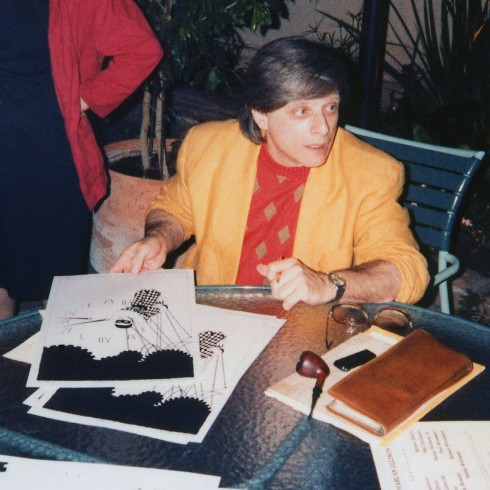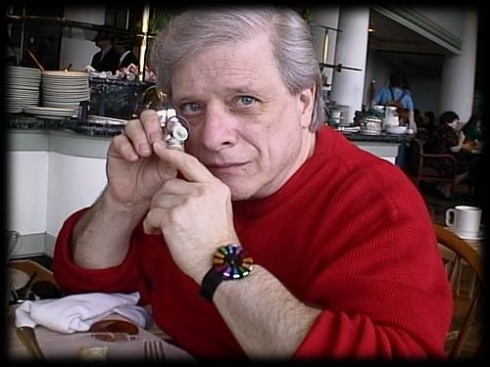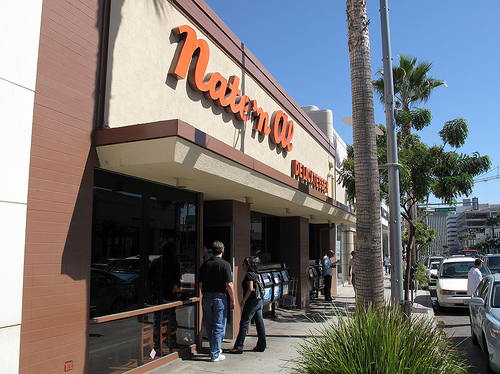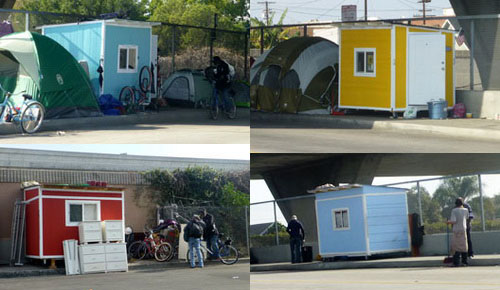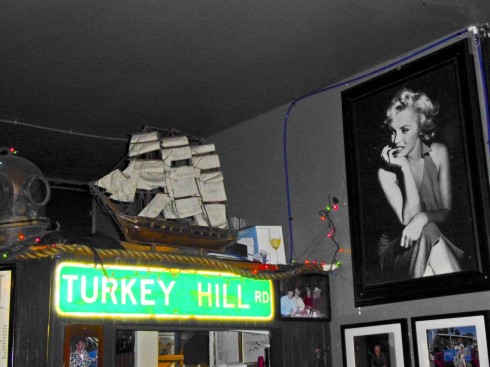America’s Tiny House Villages for the Homeless
Leslie Evans
The debate in Los Angeles city government over what to do with the tiny houses for the homeless, being built and distributed by Elvis Summers, needs to include awareness of the nationwide experiments taking place in cities across the country in establishing small villages of these kind of structures as one additional tool in reducing homelessness. They are a transitional step between the streets and permanent housing, while permanent housing for all of the homeless remains a distant dream. This is the obvious alternative to the positions currently dominating the debate: either to leave the little houses on the streets or to destroy them and expel their residents.
No one imagines that there will be enough of these kind of shelters to end homelessness or that they would be ideal if there were. But as it sinks in that providing real homes for such multitudes is at best relegated to the far future, city councils and even the federal government are beginning to see the tiny house movement, adapted to the homeless, as contributing to getting people off the street and restoring their dignity by providing a dry, secure, stable place to live, and privacy that is impossible sleeping under a tarp in an alley.
The typical pattern for these settlements is to find a piece of land, preferably an acre or two. Some cities have used existing prefab wooden sheds, commonly 8 X 10. To work best, the place needs a central building with running water and electricity, for toilets, showers, and communal cooking. Building codes for housing are often sidestepped by classifying the villages as campgrounds or putting the houses on wheels and rating them as trailers. Read more
Erica Ponygirl: Another Take On Horse Controversy
This is an issue that too few LA residents are really aware of or understand. Horses are a small blip on the radar of our citizenry for the most part but we horse people are hanging onto our last corners of town to keep the hobby alive !!! A small price to pay for the hundreds of square miles bikes can go and horses cant in LA. We are trying to keep the horsie lifestyle alive as long as we can!!!!
Hope alls well with you! I always enjoy reading your Boryanabooks! I had to comment on the piece about the Burbank horse bridge since I’ve been in that group for the last 40 years and have been privy to all the emails back and forth about their meetings and encounters.
The bike people will never give up on harrassing the horse people on the subject of bikes on the horse trails. It never ends and at least now there is an official motion to end the conflict for a while in Griffith park! That bridge was built for HORSES only! No one ever rode bikes on park trails back when it was built, but now with the big bike craze in our modern culture, the bike people want to go wherever they like. Unfortunately horses havent changed in the last millenia and the bike people dont get it. That bridge goes only to a dedicated, fenced in horse trail that has been there since 1938! Read more
Mary Reinholz Writes About Harlan Ellison
All photos are by Jill Bauman. This is Ellison at the L.A. Press Club.
Ellison with the green lantern ring
Ellison with wife Susan
MARY REINHOLZ
Way back in 1965, not long after Harlan Ellison had completed a screenplay called “The Oscar,” he was confronted by Frank Sinatra in a pool room at the Daisy, a private Beverly Hills club on Rodeo Drive.
The crooner, formally attired and holding a drink, took exception to Ellison’s game warden boots, according to New Journalist Gay Talese, who wrote a celebrated article for Esquire, “Frank Sinatra Has a Cold,” that cites a clash between the two men.
Sinatra, close to 50 at the time and accompanied by four friends, asked the jockey-sized Ellison three times if he knew what the make of his boots was. Three times Ellison replied in the negative, finally telling Sinatra, “Look, I dunno, man.”
Talese recounted how the poolroom fell silent. Sinatra sauntered over to the much younger man, someone he didn’t know. “You expecting a storm?”
Ellison snapped back. “Is there any reason why you’re talking to me?” Read more
TALKING POLITICS AND “KASHA VARNISHKAS” AT NATE ‘N AL’s
By Bob Vickrey
Many people describe the city of Beverly Hills as stylish and fashionable, while others view the excesses of Rodeo Drive-area retailers like Prada, Armani, and Tiffany’s as nothing more than shrines to wealth and privilege.
Our monthly lunch group wasn’t really taking sides on the issue. We simply made the trek there for a sandwich at Nate ’n Al’s Deli.
No matter what one might find inherently wrong about Beverly Hills, the city certainly got one thing right—their parking structures. Where else can you go on L.A.’s Westside and park your car practically next door to your ultimate destination—and do so free of charge? Try that in Santa Monica or Pacific Palisades. Read more
City Seizes Tiny Houses from Homeless Occupants
Leslie Evans
On February 12, at the request of City Councilmember Curren Price, city workers seized three of the four tiny houses on wheels for the homeless pictured above. They were located on the 42nd Street bridge over the Harbor Freeway and around the corner on Flower Street. One escaped by being rolled away by its owner. We telephoned Elvis Summers on February 15. He built the little structures and donated them to homeless people. He said the residents were not permitted to remove their belongings, including medications, before the structures were loaded on trucks and taken away. The houses are stored on a city lot. They had been slated for demolition but it appears that protests have led to city to begin a discussion of whether to go ahead with that plan. Seven more are scheduled to be seized.
The little 6 x 10 foot wheeled structures have become one focal point in the city’s uneasy balancing act between trying to find other accommodations for people living on the streets and simply dismantling their camps and seizing their property. Read more
Mustang
Phyl van Ammers
Young Turkish director Deniz Gamze Erguven named her film Mustang “as a metaphor for beauty, freedom, energy and the untamable.”
The film opens with five beautiful girls taking leave of their beloved teacher at the end of the school semester. The teacher comforts the smallest girl, softly calling her “kizim,” which means “my girl,” not as the translation in English says, “little one.” This child’s name is Lale. Her sisters are Nur, Ece, Selma and Sonay. Their power is – another Erguven metaphor – drawn from their collectivity. They are one: hydra-headed.
It is the beginning of summer, so they don’t walk straight home. They walk along the coast of the Black Sea with young male students and then run into the water in their uniforms and play horse, a scene Erguven says is drawn from her childhood. Erguven says she was humiliated by the incident in real life but she allows the sisters to play wildly, exulting in their youth and strength. Read more
Los Angeles Responds to Calls to Hire a Petroleum Administrator

Allen Company oil drill site at 814 W 23rd St, Los Angeles, CA 90007. Still closed in February 2016 pending outcome of City lawsuit and federal citations.
Leslie Evans
A long-demanded reform moved ahead in the first week of February when Council President Herb Wesson secured a vote in the City Council to hire a full-time Petroleum Administrator. Mayor Eric Garcetti responded immediately that he was already interviewing prospective candidates, seeking persons with technical expertise in oil and gas operations.
Obviously the most immediate prod to our city administrators was the three-and-a-half month methane gas leak in Porter Ranch, a neighborhood in the San Fernando Valley section of Los Angeles, that forced thousands of residents from their homes. But Porter Ranch was only the latest consequence of decisions made more than 150 years ago to allow oil and gas wells to spread throughout the residential neighborhoods of our city. It was the inevitable consequence of decades of missing oversight over an industry that normally operates far from people’s houses. Read more
CHEZ JAY’S: “DIVE” OR SANCTUARY?
By Bob Vickrey
As you make the drive down Ocean Boulevard in Santa Monica, there stands a modest—almost ramshackle—building amid the bustling growth of new condominiums and hotels there.
The late Jay Fiondella, the founder of Chez Jay’s bar and restaurant, might well have taken exception to his beloved watering hole being listed on several sites under the designation of “LA’s Favorite Dives,” but he also might have had to acknowledge that his half-century-old iconic haunt does appear that it belongs to another era. Read more
Los Angeles Strategizes How to End Homelessness
Leslie Evans
Faced with deepening public concern over the growing homeless crisis, both Los Angeles city and county in early January issued major plans. The more ambitious was from Los Angeles City Administrative Officer Miguel Santana, a 237-page “Comprehensive Homeless Strategy” presenting a ten-year plan to reduce homelessness in the city to zero. The County posted a 113-page unsigned document titled “Draft Recommended Strategies to Combat Homelessness” that offered funding on a range of homeless-related issues for the year ahead.
Both documents contain many good ideas, make clear how complex the homeless population is, with its many distinct components, each with different needs, and propose spending very large amounts of money. We all hope the money and commitment will be found to follow through on this long-term project. Many of us remember the last ten-year plan to end homelessness. Called Bring L.A. Home, it was announced with much fanfare in 2003. It largely died by 2005, and today there are more citizens living on the streets than ever. Read more
P.S. Burbank, Horses & Bicycles…
Last month I wrote an open letter to The Burbank Leader thanking our City Council for voting 5 to 0 on a compromise measure last Dec. 14 to have the Mariposa Ave. Bridge continue to be open to all, including bicyclists. Little did I dream that immediately afterwards the local horse riding community would be organized by the owners of the Circle K Horse Stables to use their considerable local political power to reverse that decision, although I suspected something was amiss when I saw one of the Council members meeting at the bridge with Circle K people only a couple of days after the vote. He would say to me then that he was there “for personal reasons only” and then refusing to say more to me.
I was not surprised, then, when I learned that a second vote was scheduled for Jan. 26 to reconsider the previous vote, which I sadly then expected to see reversed as a result. I was unprepared, however, for the throng of horseback riders who showed up for that Council meeting, all bitterly angry at the previous vote to allow bicyclists to walk their bikes over the bridge and go southward on the asphalt service road towards the Victory Blvd. overpass and the LA River Bike Path beyond. Dozens of the horse folks got up to address the Council to angrily denounce bike riders as interlopers on “our bridge”, stating that there would be inevitable horse stampedes, injuries, and an end to their neighborhood way of life itself! None of them, however, were able to cite any accidents or injuries that had ever occurred on the bridge resulting from the presence of a bicycle, and none seemed to understand that the bridge does not exclusively belong to them, but is owned by ALL Burbank taxpayers.
I later asked a Leader reporter present at the Council meeting if he was aware of any previous unanimous decision being re-considered for a do-over only six weeks after a decision had been made, and then being it reversed by another 5 to 0 vote, and he said he was not aware of any such precedent for that, but that’s what did happen at that emotionally charged meeting on Jan. 26.
So now, for the first time since the Mariposa Bridge was first opened in 1938, it is still legal to hike across it but its forbidden by the City of Burbank to not only ride, but also push or even carry a bicycle over it, which can then result in a citation for “Unlawful Possession Of A Bicycle”.
Sincerely,
Doug Weiskopf

